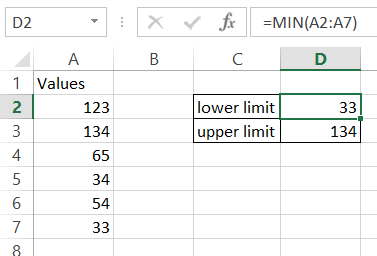How to Create a Chart with Upper and Lower Control Limits in Excel
In this Excel tutorial, you will learn how to create a chart with upper and lower control limits. It is ideal for Six Sigma style quality control dashboards.
Table of Contents
Benefits of using UCL and LCL
Upper and lower control limits (UCL and LCL) are statistical tools used to monitor processes and identify potential problems. They are calculated based on historical data and can be used to identify trends, detect outliers, and improve the quality of data analysis.
UCL and LCL can be used in a variety of industries, including manufacturing, healthcare, and finance. They are a valuable tool for any organization that wants to improve its quality control and data analysis processes.
Here are some of the benefits of using UCL and LCL:
- They can be used to identify trends in data. For example, if the data points consistently fall above the UCL, this could indicate that the process is becoming more variable.
- They can be used to detect outliers. Outliers are data points that fall outside of the UCL and LCL. They can be caused by errors in data collection or processing, or they can be genuine anomalies.
- They can be used to improve the quality of data analysis. By identifying trends and outliers, UCL and LCL can help to ensure that data analysis is accurate and reliable.
How to set lower and upper limit
First, let’s check how to determine the lower (LCL) and upper (UCL) limit.
We have a data table. In our case, it is small. Typically, however, data analysts handle large volumes of data, and it is not so easy to find the smallest and greatest value.

Use the MIN and MAX functions to set lower and upper limits.
The syntax of the MIN and MAX functions
MIN (number1, [number2] …)
MAX (number1, [number2] …)
As you can see, in order to determine the smallest or largest value, you should enter a number or a range of data. One argument to the function is enough; the next ones are optional.
In my case, the formulas are:
MIN formula = MIN (A2: A7)
MAX formula = MAX (A2: A7)
Preparing lower limit and upper limit data
In this case, you are given a data table with a designated lower and upper sales limit. Your task is to create a chart with control limits.
Let’s begin by preparing a data table.
The lower and upper selling limits have been set manually, which is also acceptable.

Highlight the data table. Go to the ribbon and the Insert tab. Choose a Line chart.

Adding upper and lower control limits in chart
Your chart should look similar to this one. LCL is visible as a orange line and UCL is a grey one.

Right-click the first lower limit line and choose Format Data Series from the menu.

Change the line color to red and set the width to 5 pts.

Do the same for the upper limit line. Change the chart title. Your chart with upper and lower control limits is ready.

Interpreting Control Charts
Once you have created a control chart, you can use it to interpret the data and identify potential problems. Here are some of the things you can look for:
- Outliers: Outliers are data points that fall outside of the upper and lower control limits. Outliers can be caused by errors in data collection or processing, or they can be genuine anomalies.
- Trends: Trends are patterns in the data that can indicate that the process is changing. For example, if the data points are consistently moving above the UCL, this could indicate that the process is becoming more variable.
- Shifts: Shifts are sudden changes in the data that can indicate that the process has changed. For example, if the data points suddenly move below the LCL, this could indicate that the process has become less variable.
It is important to note that control charts are not perfect. They can sometimes miss real problems or indicate problems that are not actually there. However, they are a valuable tool for monitoring processes and identifying potential problems.
Here are some additional tips for interpreting control charts:
- Look for patterns in the data. Are there any outliers or trends?
- Compare the current chart to previous charts. Have there been any changes in the process?
- Consider the context of the data. What are the expected results?
- Talk to the people who collect and process the data. They may be able to provide insights into the data.
By following these tips, you can use control charts to effectively interpret the data and identify potential problems.
Advanced Topics in Control Charts
In addition to the basic concepts of upper and lower control limits, there are a number of advanced topics that can be explored. Here are a few examples:
- Non-normal distributions: Control charts are typically based on the assumption that the data is normally distributed. However, this is not always the case. In cases where the data is not normally distributed, there are specialized control charts that can be used.
- Multiple variables: Control charts can be used to monitor multiple variables at the same time. This can be useful for identifying interactions between variables.
- Process capability: Process capability is a measure of how well a process is able to produce output that meets specifications. Control charts can be used to assess process capability and identify areas where improvements can be made.
- Statistical process control (SPC): SPC is a broader discipline that encompasses the use of statistical methods to monitor and control processes. Control charts are one of the most important tools in SPC.
These are just a few of the advanced topics that can be explored in the context of control charts. With these skills, you can quickly spot out‑of‑control points and react.





Leave a Reply